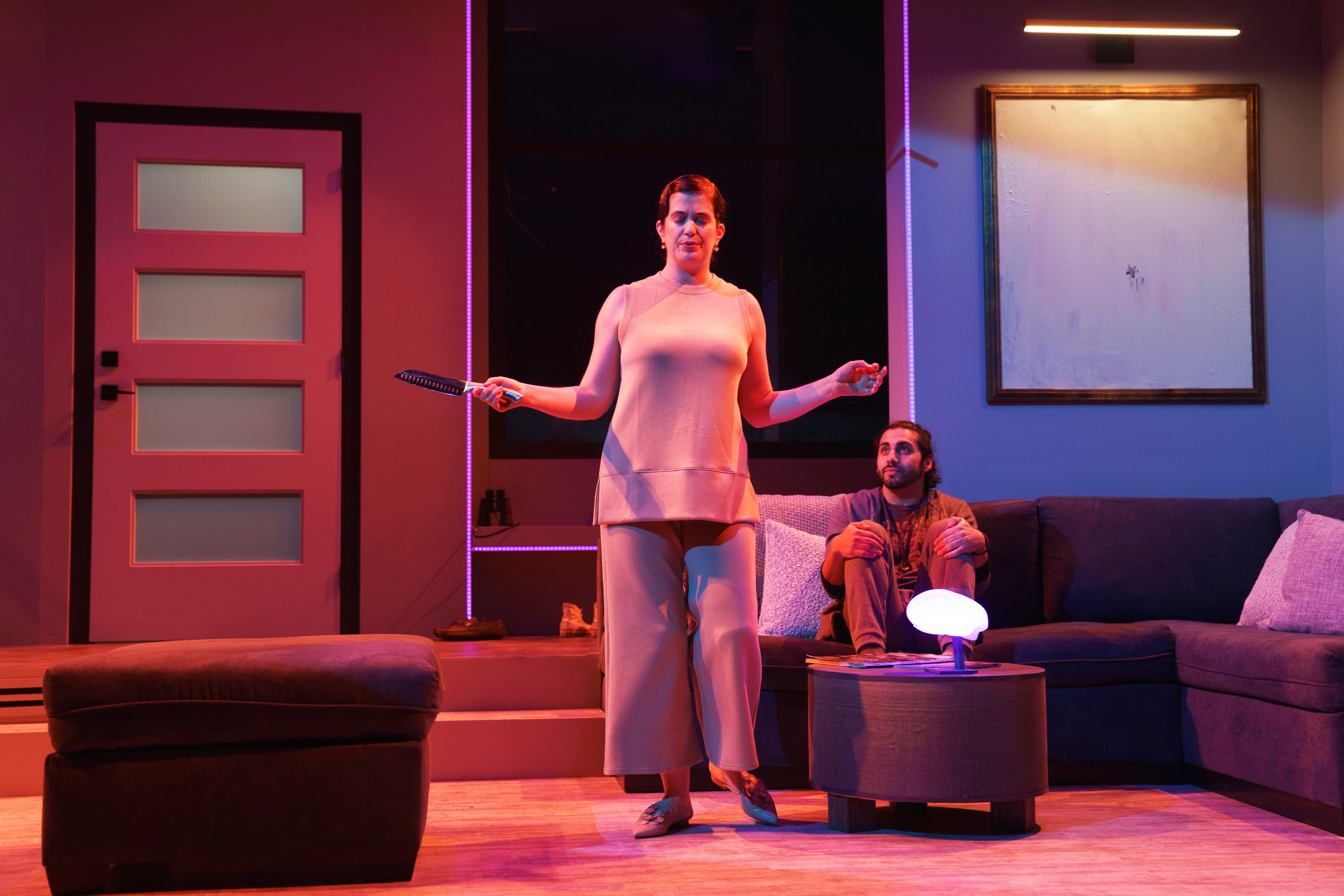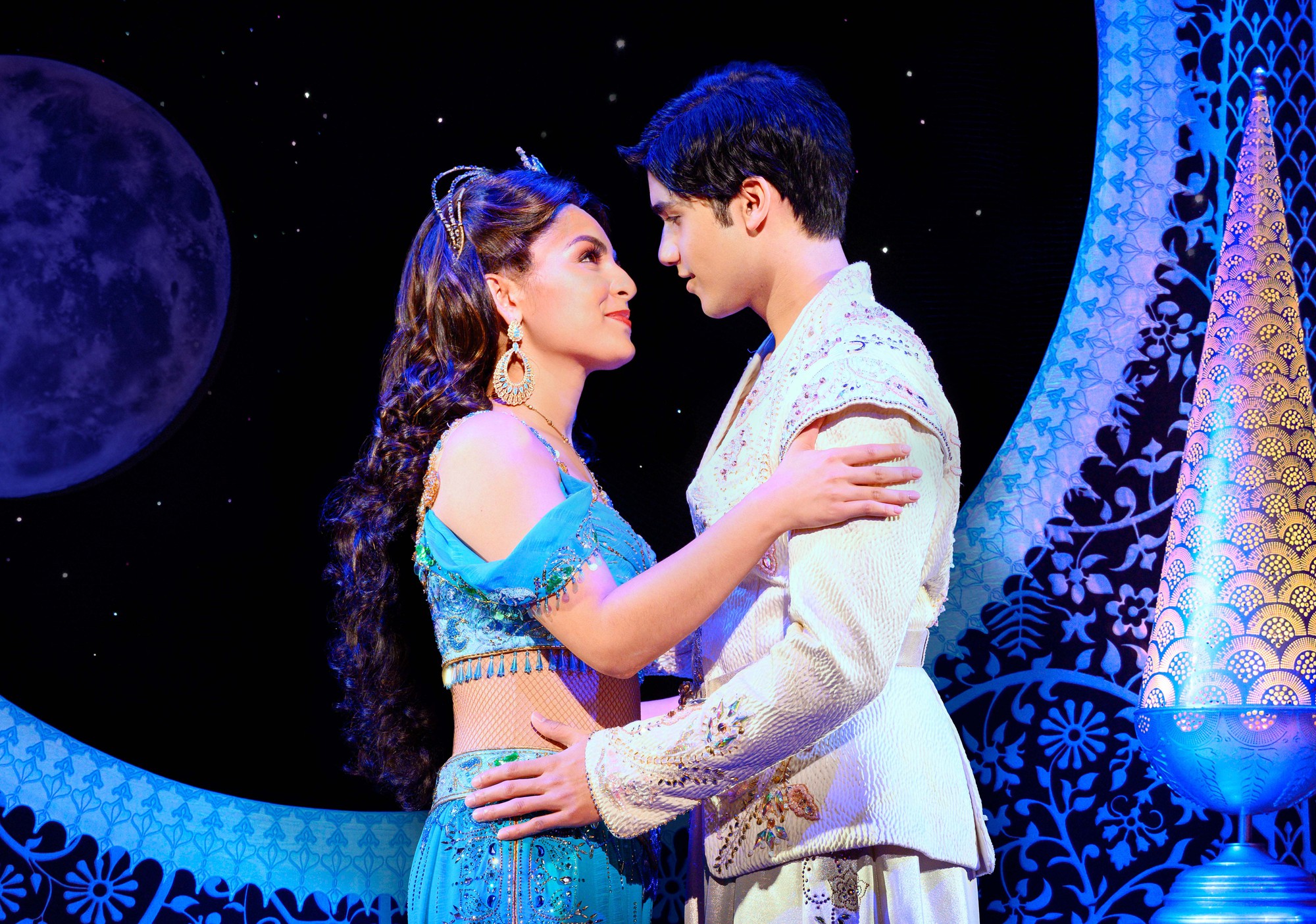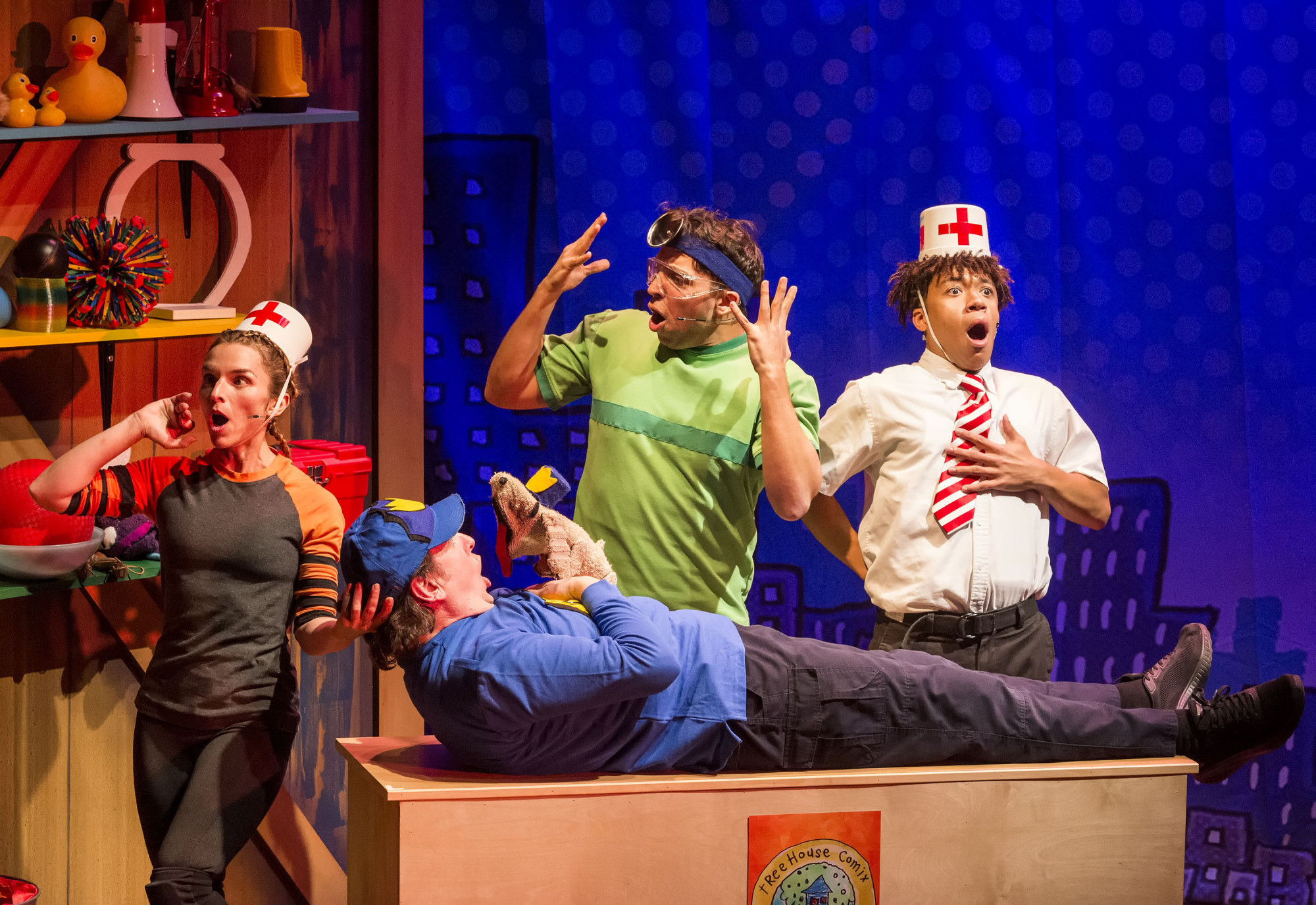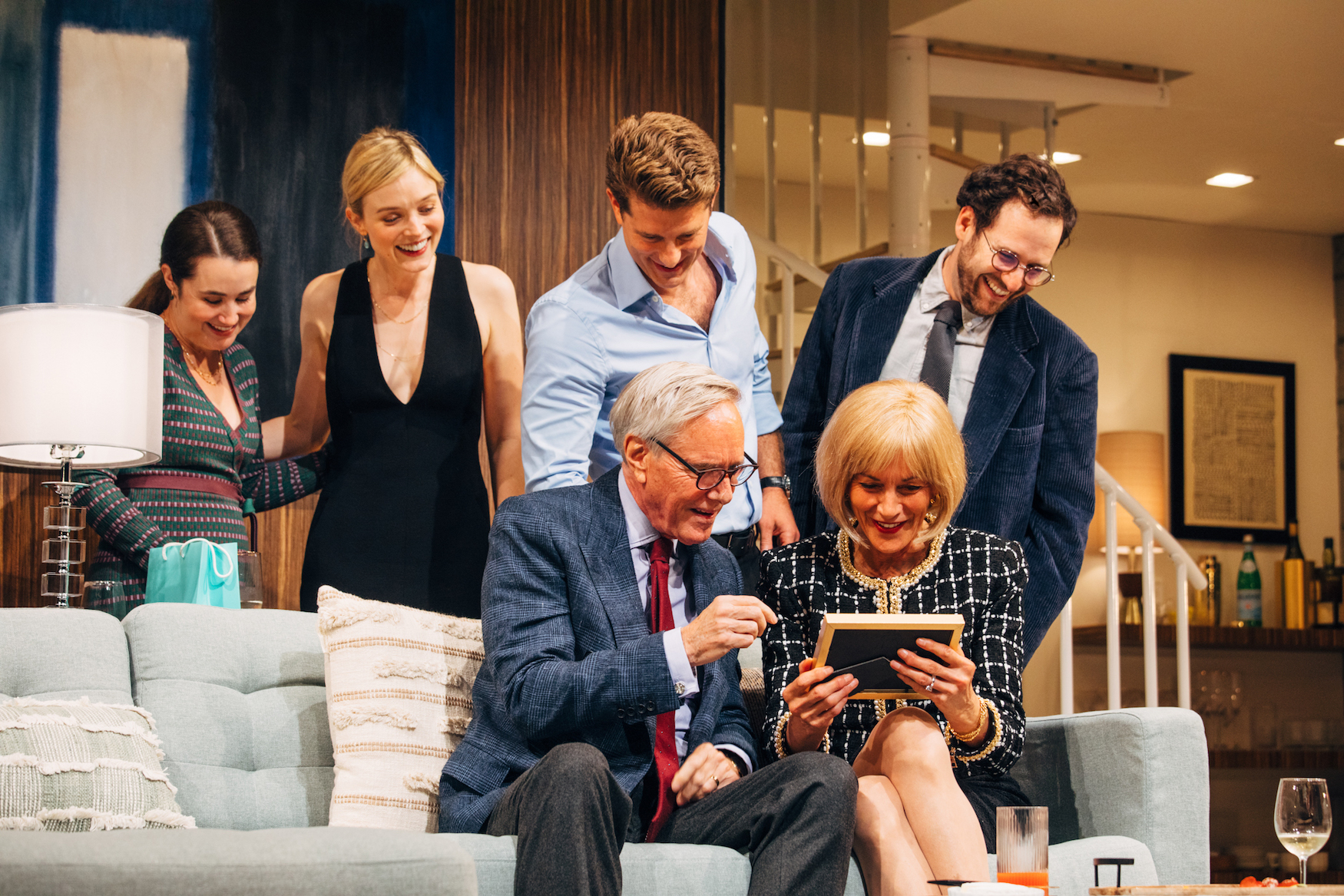Theater review: Immersive set-building enables ‘The Hope Theory’ to connect with viewers
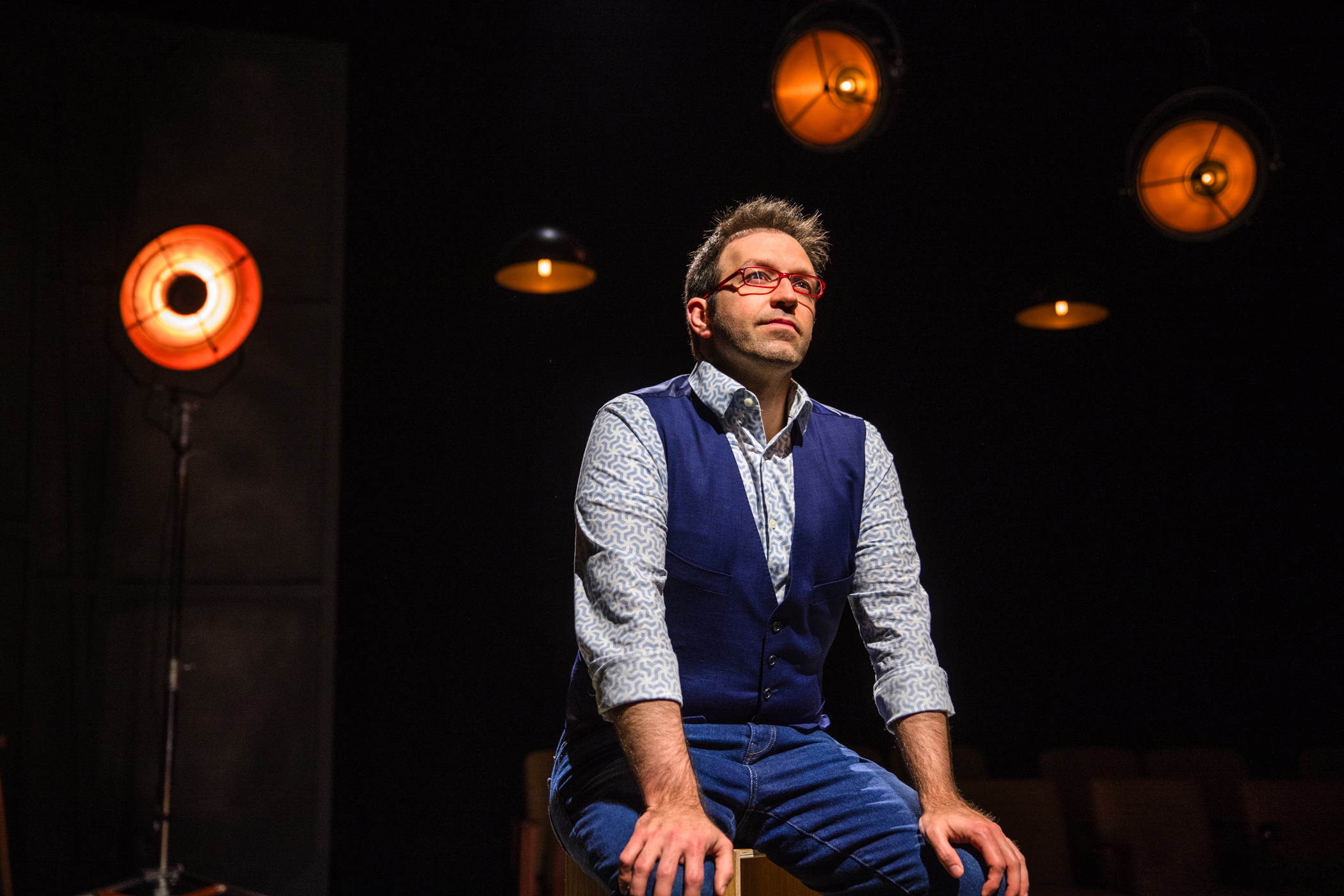
Helder Guimarães sits in front of several orange lights on stage. The magician wrote and stars in “The Hope Theory,” a theatrical event running at the Geffen Playhouse through June 30. (Courtesy of Jeff Lorch)
“The Hope Theory”
April 25 - June 30
Audrey Skirball Kenis Theater
$45 - $139
By Ana Camila Burquez
May 9, 2024 5:40 p.m.
“The Hope Theory” magically reinvents storytelling.
Written and performed by magician Helder Guimarães and directed by Frank Marshall, “The Hope Theory” will run until June 30 at the Geffen Playhouse. The one-man show tells the story of Guimarães’ experience first arriving in Los Angeles as a Portuguese immigrant. Using magic as a storytelling tool, Guimarães recalls the bittersweet experience of building a home in a foreign country, making “The Hope Theory” a vulnerable, humorous and immersive experience that will inspire audiences to always stay hopeful.
[Related: ‘Fat Ham’ is a must-see ‘Hamlet’ production, keeps classic charm, makes it its own]
The thrilling experience starts the moment viewers set foot in the theater. Before even sitting down, the audience is met at the door by a mysterious white button that gives them a numbered ticket. This interactive trend continues throughout the show, with Guimarães entering the stage from the audience door and often including spectators in the magic tricks – including one involving the aforementioned tickets. Making the show a collaborative experience, especially within a small theater, creates an atmosphere of community among the audience and Guimarães.
The stage maintains a single set throughout the show, which, although simple, is very detailed. It consists of a three-wall space with a window, chair, desk and various wooden boxes on the stage. With multiple items scattered around the space, such as books, board games and a radio, the props give the illusion of a lived space, clearly representing someone’s home. However, from any angle, anyone in the theater is able to see the edges of the set as well as wooden pieces on the back, preventing viewers from completely immersing in the space. That being said, as the show continues, this turns out to work perfectly for the story. The majority of the show is narrated in past tense, making it obvious that the set’s purpose is not to fully immerse the audience into the story, but rather for it to provide a developing image of Guimarães’ first apartment in Los Angeles.
As for the narrative, magic is unmistakably the star of the show. Guimarães starts his performance in a conversational monologue, giving context about his Portuguese origins. As the story develops, Guimarães uses magic as a metaphor to express both the emotions he felt during his transition from Portugal to LA and the lessons he learned along the way. In addition to magic, Guimarães also arranges things around the set throughout the show, so everything looks flawlessly in place by its conclusion, beautifully aligning this visual arrangement with his process of building a home in LA.
Yet, this narration wouldn’t be as effective without the incorporation of masterful sound and lighting. Lighting is a key element that sets up the captivating show experience from its first second. With hanging industrial lights above the audience, the show’s projections wield the power to make every attendee feel truly included in the story. Lighting also had the power to create entirely new environments in a static set, such as during the few instances Guimarães would narrate in the present tense while doing a flashback. In these cases, lights would be dim enough that the audience could only see Guimarães and whichever prop was necessary for the scene, instantly immersing the audience in the story by blending the set’s borders with the darkness the lighting created, making Guimarães the sole focus of the scene.
Music and sound effects were also essential elements that were able to both break and make the show. Songs would specifically be used as transitions, similar to in sitcoms, that complemented the static set, helping differentiate the ending and beginning of different scenes. These transitions were creatively incorporated into the show, with Guimarães turning on a prop radio, simulating the music coming from the device and maintaining the illusion of the show.
[Related: ‘Black Cypress Bayou’ swims through murky plot to render a haunting history]
Sound effects were also used as a strategy to make the narration more realistic, though they were sometimes more distracting than complementary. For instance, a sound effect of a plane taking off sounded out of place and unrealistic. However, these sound effects also enhanced the scenes, such as a scene at a New Year’s party, in which the sound of voices painted a vivid image without the need for an ensemble.
Nevertheless, “The Hope Theory” is an innovative show that incorporates magic in a surprisingly emotional way, which, besides entertaining, provides a deeper sense of vulnerability. Guimarães’ storytelling abilities as well as engagement are capable of connecting with all viewers.
In a deeply inspirational and funny show, Helder Guimarães will keep audiences on the edge of their sets.



